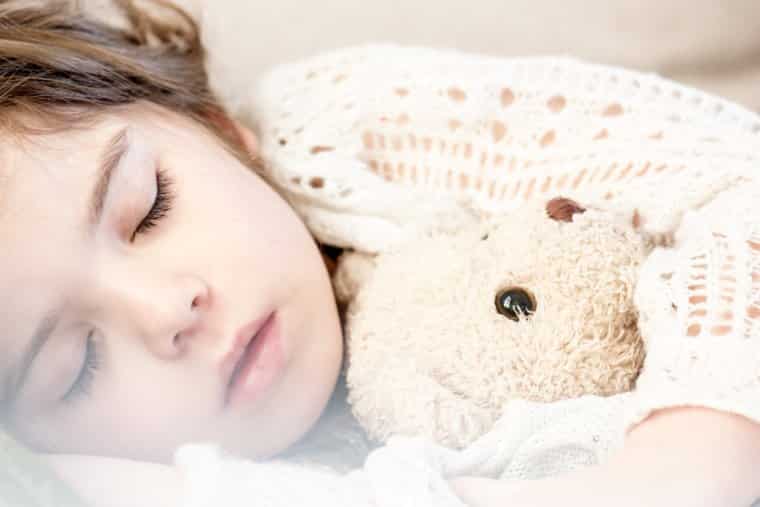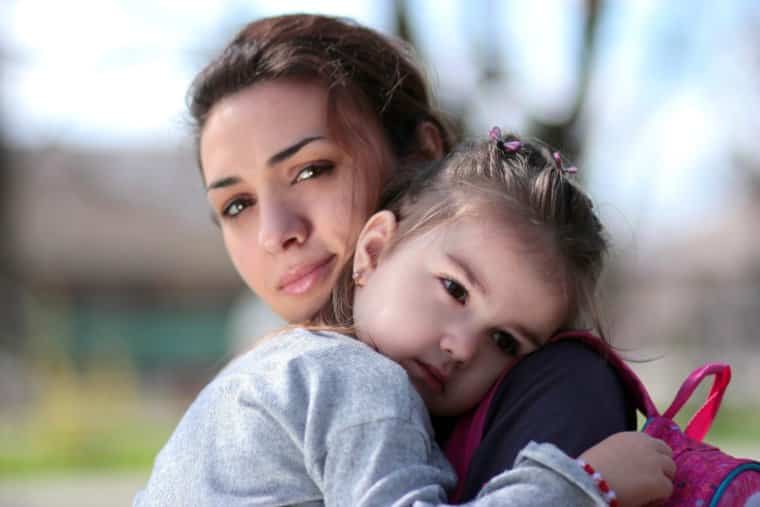When your child screams, hits, bites or scratches you it's the most awful feeling in the world. All of a sudden you may feel desperate, or your anger flares and soon you are both screaming and crying. But more anger aggravates fear and can result in more aggression, leaving you both going round in vicious circles. So how can you set effective limits with an aggressive child?
Hand in Hand's Laura Minnigerode uses a special limit setting tool called a vigorous snuggle with a child that scratches and grabs. The warmth and smiles she uses while saying “no,” diffuses anger and fosters connection. Here's how to set a limit with affection even when a child has aggression.
I work in a classroom with kids aged one-to-two year olds. One of them, Ruby is about 22 months old. She often stays up late to spend time with her mom, who works during the evening, and so on many school days she appears out of sorts and very tired. This has lead to aggression and in particular scratching, with other upset parents complaining because of some scratching injuries in the school.
Although teachers are trying to help Ruby, many times she receives negative and sometimes harsh reactions when they move in to stop her behaviours.
Since I know an aggressive child is a frightened child, I wondered if a vigorous snuggle might be the way to reach Ruby. Using this form of playful interaction connects to a child’s limbic system. It shows affection when a child is off track and can’t think clearly enough to receive more logical direction.
One day, I bent down and told Ruby I was ready to help her get her nap map. She came to me, but then tried to grab at my face. I verbally set a limit with Ruby with a simple and calm “No,” and then I used a vigorous snuggle.
“No! Not those fingers!” I said. I spoke to her fingers. “That is a funny way to show me you want to play!”
Ruby received my vigorous snuggle with an arched back. She pulled away, but I pursued. “Are you trying to get me?” I said, and made eye contact. Ruby looked surprised for a moment but then she relaxed and I saw she was very surprised and relieved that she hadn’t been scolded.
I wanted to keep the connection, so we played with a stuffed toy that acted silly and gave her hugs.  Then, as we got ready for nap, I made sure to spend extra time helping her get comfortable, smoothing her hair, making lots of eye contact and using a very warm tone speaking with her.
Then, as we got ready for nap, I made sure to spend extra time helping her get comfortable, smoothing her hair, making lots of eye contact and using a very warm tone speaking with her.
Since that day, Ruby and I have shared a special connection and over the next few weeks, Ruby seemed more comfortable and more herself in the classroom. She hit many new speech milestones and got very interested handing out pacifiers to other students at nap time.
These days she even helps pat a classmate’s back for a few minutes at the start of nap.
Why it Works:
It can be hard separating yourself when negative, hurtful behaviours are involved, but keeping playful while saying no has lasting and powerful results. This type of reaction addresses the social part of the brain, making connections when requests and reason don't work. When toddlers are angry and intense, a vigorous snuggle can turn a frown into a smile and greater connection. Try it next time your child is lashing out.
For more ideas about how to give a vigorous snuggle read this. If your child's aggressiveness is worrying you and you want the hitting to stop try our online class. You'll discover what causes aggression and how to handle hitting, biting and kicking with confidence.
 Laura Minnigerode is a Hand in Hand Instructor Certification Candidate living in Austin, Texas. She has three children and uses Hand in Hand's five listening tools in her work in daycare and preschool settings.
Laura Minnigerode is a Hand in Hand Instructor Certification Candidate living in Austin, Texas. She has three children and uses Hand in Hand's five listening tools in her work in daycare and preschool settings.
Connect with Laura through her site Listening for Good, and register for her free call on Separation Anxiety at school.
